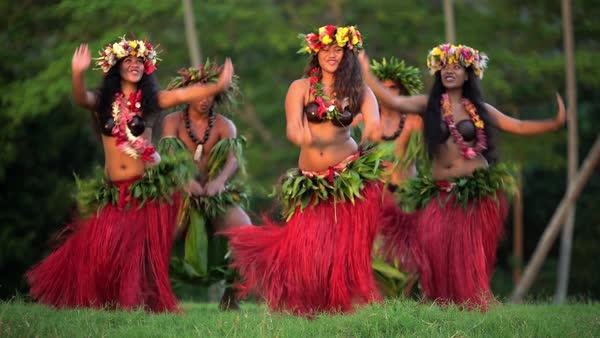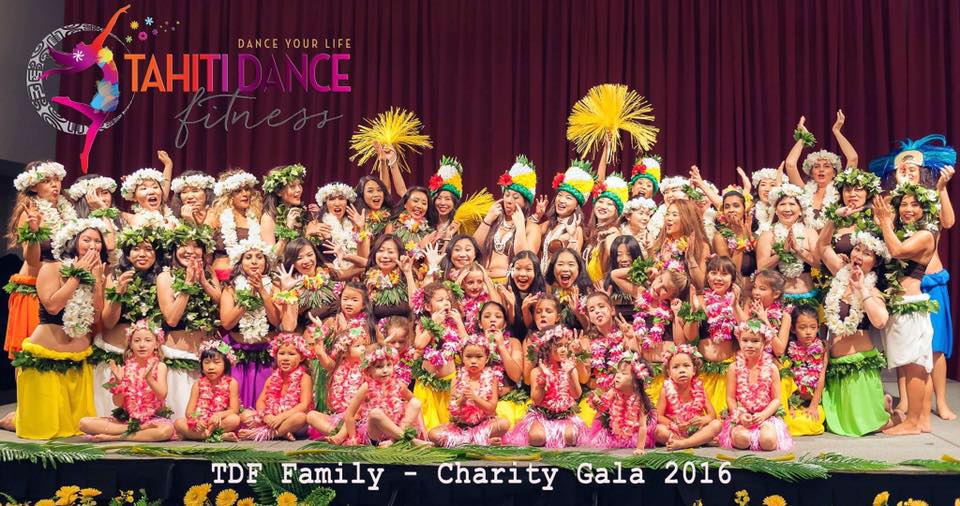Tahitian dance is a beautiful dance art coming from Tahiti, French Polynesia, an island located in the middle of the Pacific Ocean, about six hours flight from Hawaii.
Tahitian Dance is called Ori Tahiti in Tahitian Language as it literally means the Dance of Tahiti.
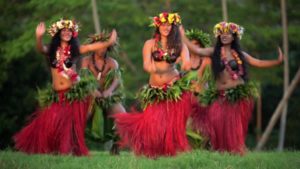 Tahitian Dance Ori Tahiti is an original artistic expression that has deep roots in ancient Polynesian traditions.
Tahitian Dance Ori Tahiti is an original artistic expression that has deep roots in ancient Polynesian traditions.
At the very beginning, Tahitian Dance Ori Tahiti was the art representing movement and life of the Tahitian civilisation and it was only taught through oral tradition.
The only element of this dance art that has survived centuries of turbulent history is the direct and intimate link between oral language and dance movement.
As a result of history, the foundation of Tahitian dance Ori Tahiti remains today a direct link between the Tahitian language and the dances themselves.
The fame and growth of Tahitian dance Ori Tahiti throughout the world is directly linked to Tourism and Performances abroad. 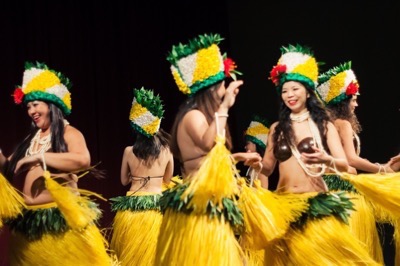
As a result, Tahitian dance Ori Tahiti was performed abroad, in countries such as Japan, Mexico, California, and France and many more, therefore, most people know Tahitian dance Ori Tahiti under only one aspect: the sensual “Aparima” story telling songs and vibrant dances “Ote’a” fast drums songs or dynamic Solo Dances.
Tahitian dance Ori Tahiti is an evolving expression of the history and evolution of Tahitians.
Nowadays, the evolution of steps in Tahitian dance can be associated to the spiritual and cultural colonization of Polynesia, the pursuit of tropical resort tourism in place of cultural tourism, the accelerated development of Polynesian society in 1960s, and the lifestyle changes that came as a direct result of these developmental alterations.
Elder members of the Polynesian society often say that both the dance movements and dance performances that they view today are nothing like the movements that they witnessed during their youth.
The ancient version of Tahitian dance Ori Tahiti was the Upa’upa which has now disappeared. The “Ote’a” drum dance was then considered a dance for men only as it was described as a warrior dance.
Two centuries ago, the Missionaries from the London Missionary Society arrived in Tahiti and described the Tahitian dance Ori Tahiti as satanic and obscene. During that time, Tahitian dance Ori Tahiti was forbidden. In 1819, the Pomare Code (laws code) prohibited all dances, songs and cultural entertainment.
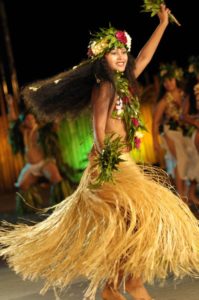 It’s only in 1880 during the French National Day on July 14th that all traditional festivities were finally allowed and named under the Festival called “Tiurai.
It’s only in 1880 during the French National Day on July 14th that all traditional festivities were finally allowed and named under the Festival called “Tiurai.
At the beginning of the 20th century, Tahitian dance Ori Tahiti was only practiced during the festivities of the 14th of July or during departure or arrivals of boats. During this same period of time, the traditional costumes and tapa fabric came back into use, that’s when the grass skirt or more were created.
The Tāmūrē is the name of a fish from the Tuamotu islands, though it was originally used as the name of Tahitian dance. During the second World War, a veteran from the Troops sent in the Pacific, named Louis Martin, wrote a famous song with Polynesian traditional rhythms and used the word Tāmūrē in his chorus. That’s how he got the nickname of Tāmūrē Martin which got associated to Tahitian Dance. It’s only later on that Tahitian dance was translated in Tahitian language as Ori Tahiti which literally means “Dance of Tahiti”.
In 1956, Madelein Mou’a started the first Tahitian dance group named Heiva. It’s only during the second half to the 20th century that Polynesian dances started to set up standards and formed into dance groups.
From 1980, the traditional dances of Tahiti gain in popularity and a large number of dance schools started to develop. Dances and Costumes evolved under the increase of international performances and competitions linked to the Heiva Festival.
Nowadays, the “Tahitian Dream” is represented through Polynesian Dances, though most often, a confusion is made with Hawaiian Hula and Tahitian Dance Ori Tahiti as they both differ from their music, dance steps, history and costumes.
Tahitian Dance Ori Tahiti is a beautiful art that keeps spreading around the world and more and more individuals enjoy this activity as leisure but also as a work out.
We are glad to have pioneered Tahitian Dance Ori Tahiti in Singapore as a new way to stay fit through our Tahiti Dance Fitness school since 2009. May the Aloha Spirit (Polynesian Spirit of caring) inspires many who needs it.

